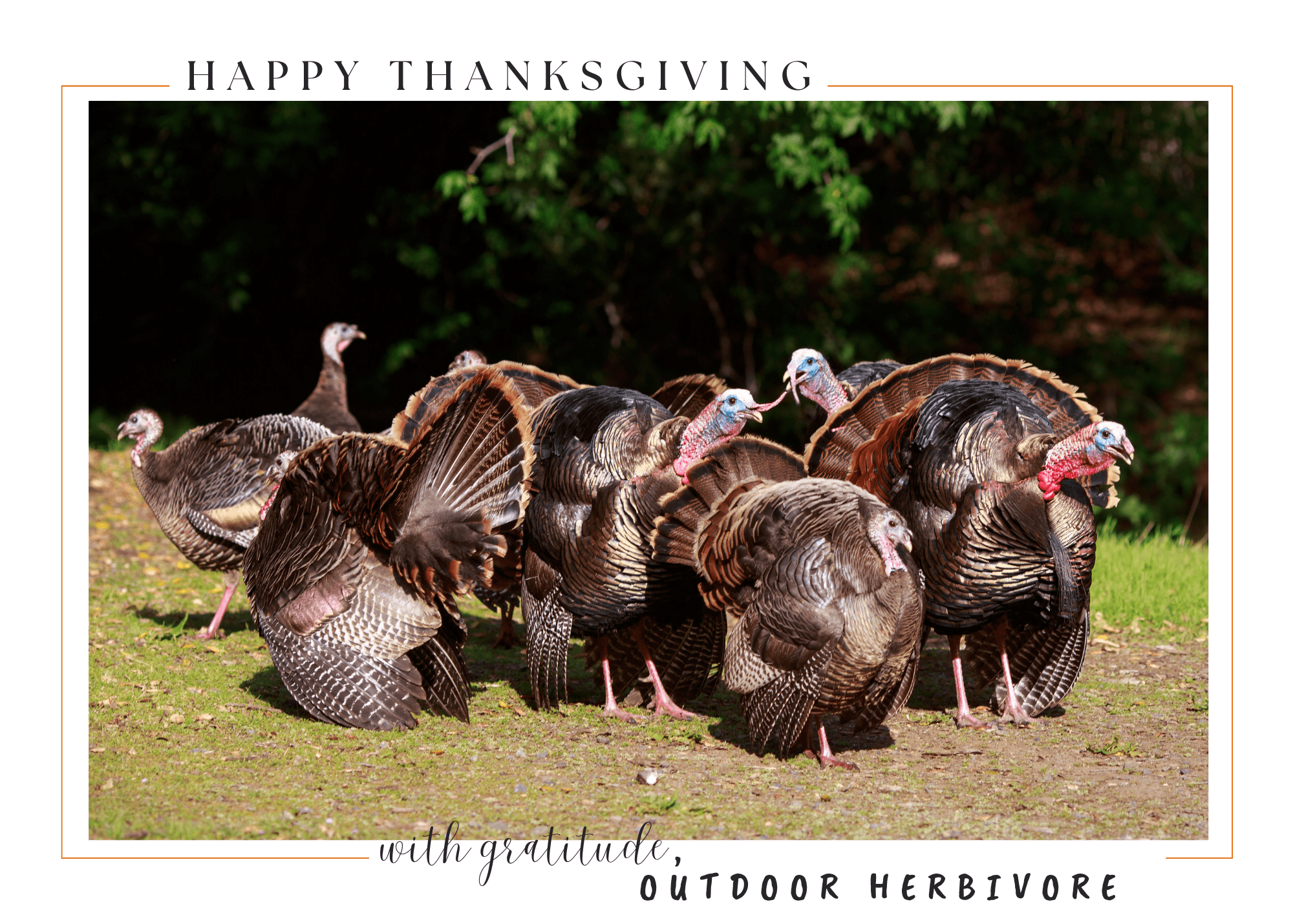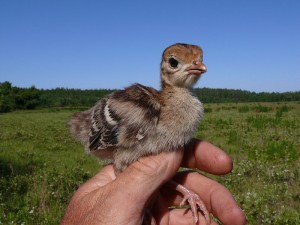We seldom see wild turkeys while backpacking, although we were surprised to see a flock alongside the road while heading back from a trailhead at Linville Gorge in North Carolina. There were at least a dozen birds in the flock, but their natural fear of humans meant I could not get the camera out in time to take a picture. They consecutively dashed away in the thick of the tree cover.
This made me realize how little I know about the lifestyle of this wild bird that seemingly roams free beneath the canopy of trees. How typical is it for turkeys to travel in packs like this? Where are you most likely to find wild turkeys? The more you know about the natural world, the more you can appreciate it and show mercy to it.
Despite many Americans viewing the Turkey as a Thanksgiving centerpiece food, turkeys should earn more respect than this. In the spirit of the Thanksgiving holiday, we’d like to share a few fascinating facts about the Wild Turkey –
- The first native bird to be domesticated. The turkey is the first native bird to be domesticated and is one of the two domesticated poultry species native to North America; the other is the Muscovy duck.
- Turkey is among the most ancient birds. As one of the most ancient bird species, the wild turkey belongs to the Galliform order, which includes long-legged, heavy-bodied birds similar to chickens. Turkeys diverged from pheasants around 11 million years ago and were likely continuously distributed from the middle latitudes of North America to South America during the Pleistocene epoch. The Galliform order also encompasses chickens, quails, partridges, pheasants, grouse, and fowl.
- There are only two types of wild turkey: one is native to the Yucatan Peninsula (Agriocharis ocellata), and the other is native to the US and Mexico (Meleagris gallopavo).
- Turkeys are social birds that often move in small flocks on the ground. The basic unit is the family flock, or brood, which consists of a female turkey (hen) and her young (poults or chicks). When the weather turns cold, turkeys typically separate into three groups: young males (jakes), adult males (toms), and females (hens) of all ages. In winter, these groups can exceed 200 birds.
- Turkeys sleep in trees as a flock, perching on branches to stay safe from predators such as coyotes and foxes. Upon waking, they will call out a series of soft yelps to check in with others in their roosting group to ensure everyone made it through the night safely.
- When communicating, males gobble while females click. If you hear the birds gobbling, they are males. On the other hand, if you hear a clicking sound, they are hens. You can hear a turkey gobble up to a mile away on a quiet day.
 Turkeys turn red when excited. The fleshy flap of skin hanging over a gobbler’s beak is called the snood. This snood is usually a pale pinkish color when the bird is relaxed, but changes to bright red when the bird gets excited.
Turkeys turn red when excited. The fleshy flap of skin hanging over a gobbler’s beak is called the snood. This snood is usually a pale pinkish color when the bird is relaxed, but changes to bright red when the bird gets excited.- Turkeys eat stones. Turkeys consume stones, which are known as gastroliths. These tiny stones, swallowed by the bird, are found in the gizzard, a part of the turkey’s stomach. Since turkeys don’t have teeth, the stones help them grind their food.
- Turkeys have two stomachs. The first stomach is called the glandular stomach, where food is softened and broken down by gastric juices. After this, the food moves into the second stomach, the gizzard, where it is ground up against the gastroliths.
- Wild turkeys are fast fliers. Wild turkeys are surprisingly fast fliers, reaching speeds of up to 55 mph over short distances, and they are also capable runners, reaching speeds of 15 to 30 mph. They can take off from a sitting position, but typically do not fly more than a few hundred feet due to their short wings and heavy body weight. When they feel threatened, they are more inclined to run than to fly. In contrast, commercially raised (domestic) turkeys are unable to fly. Their diet causes abnormal body weight, making flight impossible and standing difficult. They are bred to develop abnormally large breast muscles, which often causes them to topple over; as a result, they require artificial insemination to breed.
- Turkeys are non-migratory birds. Their heavy plumage and low activity help them to conserve energy during cold temperatures. They are opportunistic omnivores, eating a variety of plants and insects when available.
- Males are colorful. Male turkeys are more colorful than females, as is common in many bird species. Males display their elaborate colors during courtship displays.
- Born with feathers. Wild turkey chicks are precocial, meaning they hatch from eggs with feathers and can fend for themselves quickly. Chicks leave the nest within 24 hours to forage for food with the guidance of mom. The male turkeys do not provide any parental care.
- Turkeys see in color and have excellent daytime vision. Because turkeys are a prey species, their eyes are located on the sides of their heads, giving them a wide 270-degree field of vision. However, this eye placement affects their depth perception, making it difficult for them to see objects directly in front of them with both eyes at the same time.
- Turkeys, like all birds, have no external ears. Like their eyes, a bird’s ears are located on the side of their head, and because they have no outer ear (pinna) with a funnel to concentrate sound in one direction, they hear all the way around them. This omnidirectional hearing makes it difficult for them to pinpoint the source of a sound, which is why birds sometimes fly into danger (i.e., geese into airplane engines), rather than away from it. Interestingly, birds of prey, such as owls, have asymmetrically placed ears to facilitate the location of prey. Sound received by one ear slightly earlier than the other helps the birds determine the direction the sound is coming from.

For each new morning with its light,
For rest and shelter of the night,
For health and food, for love and friends,
For everything Thy goodness sends.
~Ralph Waldo Emerson



